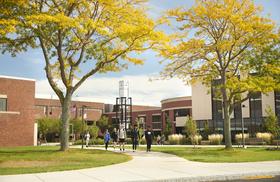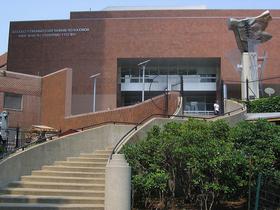Community colleges have traditionally served students of all ages and from all walks of life, unlike other postsecondary schools, which primarily cater to high school graduates. The recent Great Recession impacted enrollment at community colleges across the country, although until recently, the precise areas of that impact were not yet known. A new study has helped clarify some specifics of how the recession has impacted enrollment at community colleges nationwide.
About the Study
The National Student Clearinghouse Research Center conducted this study primarily to determine how the recent recession impacted college enrollment and persistence patterns. The study looked at thousands of institutions nationwide to determine the number of first-time students under 21 who enrolled in a postsecondary institution for the fall term between 2006 and 2010. According to a report at Inside Higher Ed, this report is designed to be the first in a series of reports titled "Signature Reports" by this organization.
What the Study Found
The study "Understanding the Recession's Impact on U.S. College Enrollment and Persistence Patterns" found that a larger number of students chose community college after high school. However, the larger numbers in this area did not seem to detract from enrollment at private colleges since these schools did not suffer the losses that many expected throughout the recession.
Dr. Don Hossler, Executive Director of the National Student Clearinghouse Research Center, told Fox that some of the findings from the study were not what researchers expected to find. Dr. Hossler said, "The findings are somewhat surprising given the depth of this recession. Through adapted enrollment management, recruitment, and financial aid strategies, institutions appear to have weathered these recent years better than many had anticipated."
According to the organization's website, specific findings of the study include:
- Increases in community college numbers drove overall enrollment figures
- Despite concerns about affordability, four-year institutions avoided enrollment drops better than expected
- Two-year schools saw an increase in enrollment during the recession, while four-year schools maintained consistent numbers throughout
- Persistence rates, which were much higher than retention rates, did not appear to be impacted by the recession.
- Different geographical locations boasted very different enrollment rates
Retention vs. Persistence Rates
One of the differentials this study examined was retention vs. persistence rates at colleges nationwide. Retention rates refer to the number of students who have continued enrollment at a single institution. In contrast, persistence rates indicate students who have continued enrollment at any college nationwide. This study showed that persistence rates were considerably higher than retention rates at most schools nationwide, suggesting that while many college students continue their higher education, they don't always do so at the same school where they started. According to this study, the recession did not significantly impact the persistence nor retention rates.
Cliff Adelman, a senior associate with the Institute of Higher Education Policy, was happy with including persistence rates in this study. However, he believed the organization could have more effectively measured the data they collected. Adelman told Inside Higher Ed, "Hats off to them for pushing persistence rates over retention, but it's an incomplete account of persistence. There's something called life that higher education institutions cannot micromanage. And if I decide that my girlfriend moved to Arizona, and I'm in a funk, and I go out to Phoenix this fall and I don't re-enroll until winter, you're not counting me. That's an example of how life gets in the way."
Despite concerns over some of the study's data, most agree this is the most comprehensive research work for explicitly measuring the recession's impact on college enrollment. Doug Shapiro, research director at the National Clearinghouse Research Center, said the study intentionally focused on how the recent recession affected the decisions and plans of high school graduates nationwide. The focus was narrow to ensure the integrity of the research and a more straightforward analysis of the results overall.
The Great Recession may have sent more students to community college after high school, but it did not do as much to thwart the degree plans of those students as much as initially thought. While more students may have headed to community college for practical and financial reasons, the results of this study still showed that high school students recognized the importance of a postsecondary education and worked on a way to achieve those goals.
About the NCRC
According to the organization's website, the National Student Clearinghouse Research Center was first formed in 1993 to be a non-profit education partner to colleges and universities around the country. The center's studies focus on college enrollment, transfer behaviors, and outcomes. The agency uses a Student Tracker educational research service to accumulate information and produce viable statistics that schools can use to evaluate their current status and make necessary adjustments.
Research conducted by the agency has saved institutions of higher education nearly $400 million annually. According to a report at Fox 6 Alabama, most of the information compiled by the center is offered to institutions at no charge so that colleges can allocate their resources to other areas. This report can help community colleges and other postsecondary institutions recognize how the economic slowdown has affected enrollment and persistence patterns so they might more effectively respond to student needs in uncertain economic times.
Questions? Contact us on Facebook @communitycollegereview.















